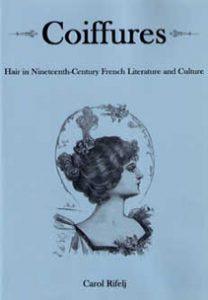
Balzac claimed that toilettes were the expression of society. Coiffures describes the historical and cultural practices associated with women’s hairstyles, hair care, and hair art in nineteenth-century France. Hair also has profound symbolic significance. Lying on the border between life and death, it grows, but does not feel. It marks sexual identity; it can be wild and erotic or tamed and made docile by hairdressing. Literary works are inevitably informed by social and cultural practices, and those of the period make extensive use of the meanings of hair. The Realist novelists in particular devote great attention to the physical traits and dress of their characters, and hair is often a key element in their descriptions and plots. Coiffures shows how a wide range of literary works incorporate the manifold aspects of hair, and it examines particular texts in detail, including works by Balzac, Sand, Flaubert, Zola, Gautier, Maupassant, and Rodenbach.
About the Author
Carol Rifelj was a professor of French at Middlebury College.

